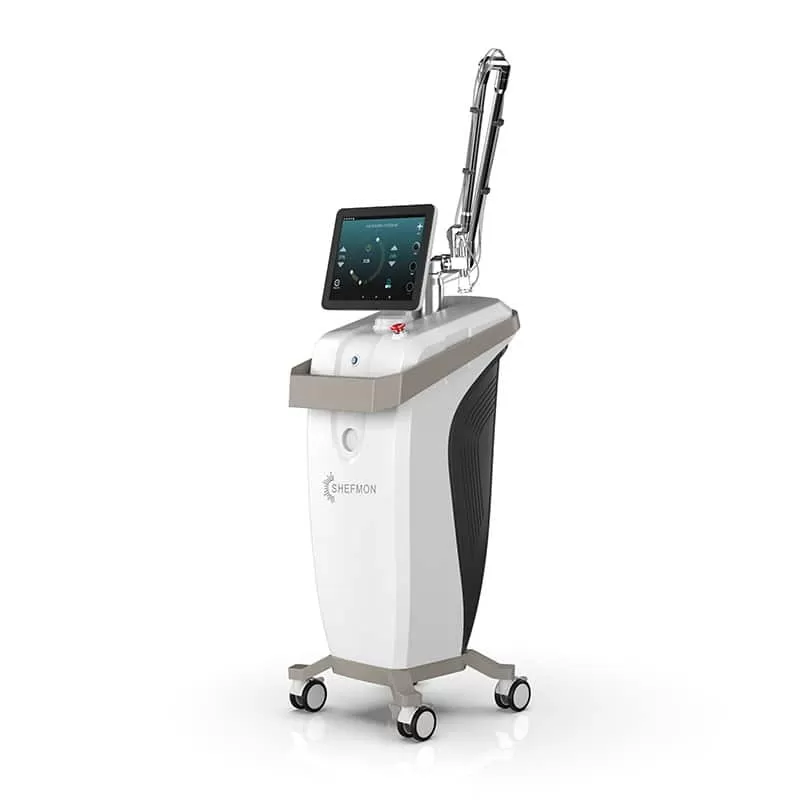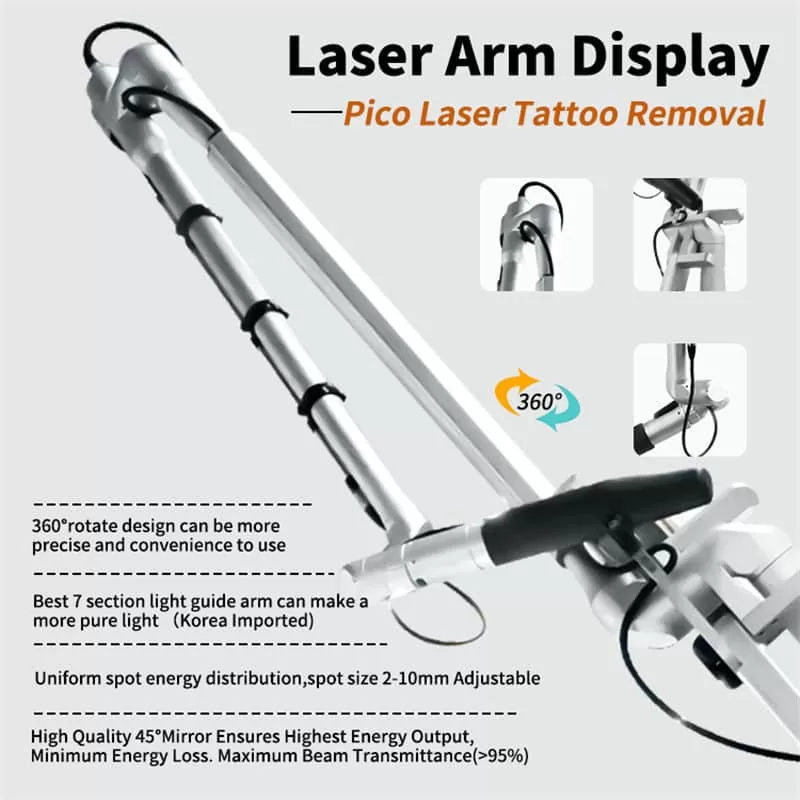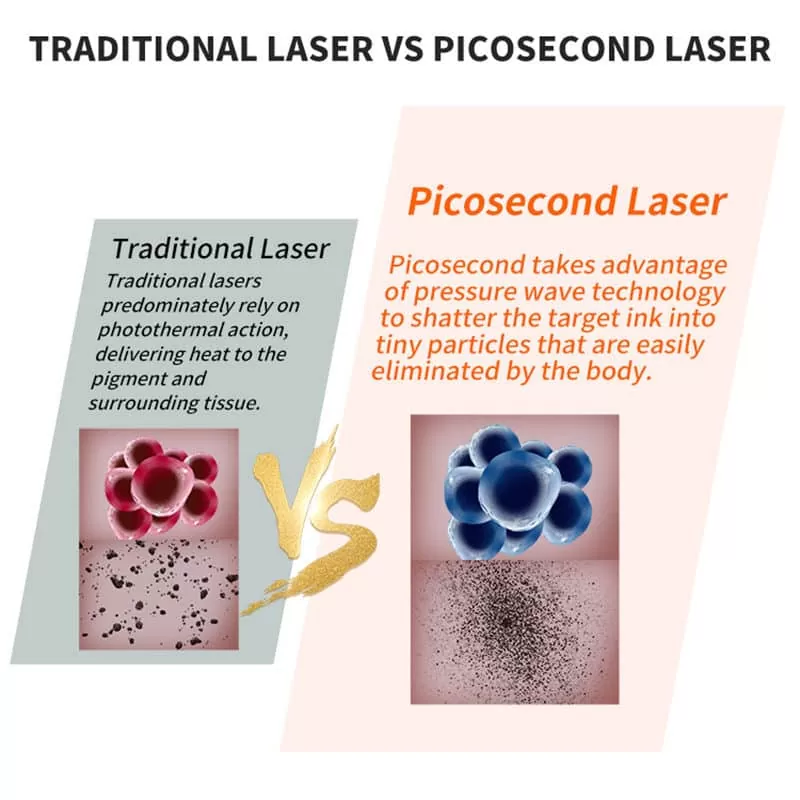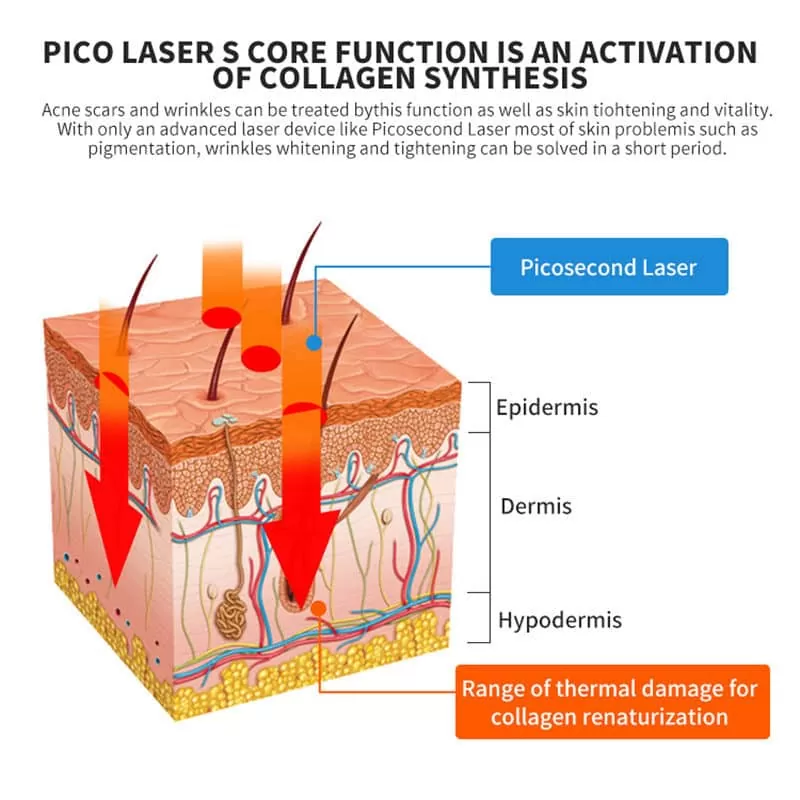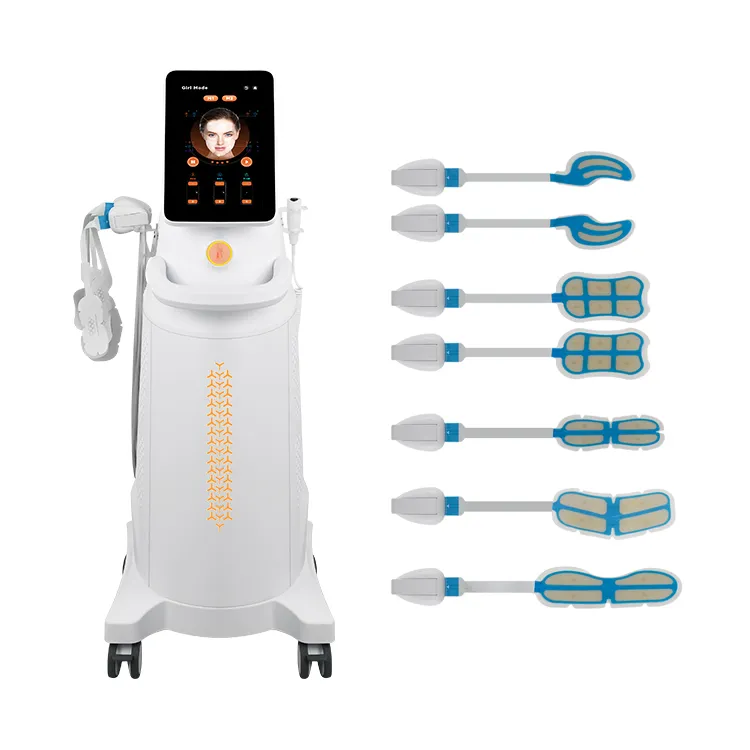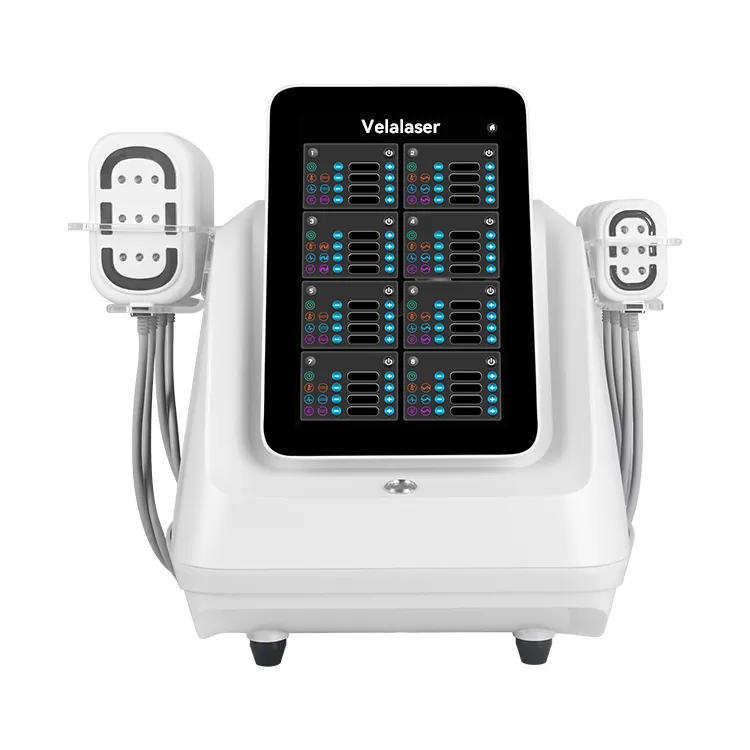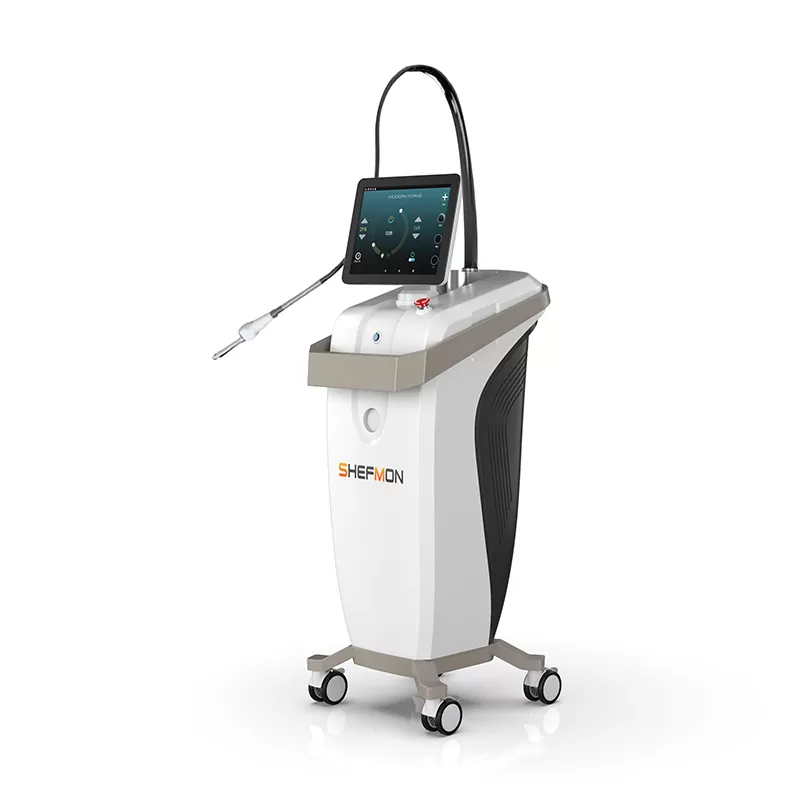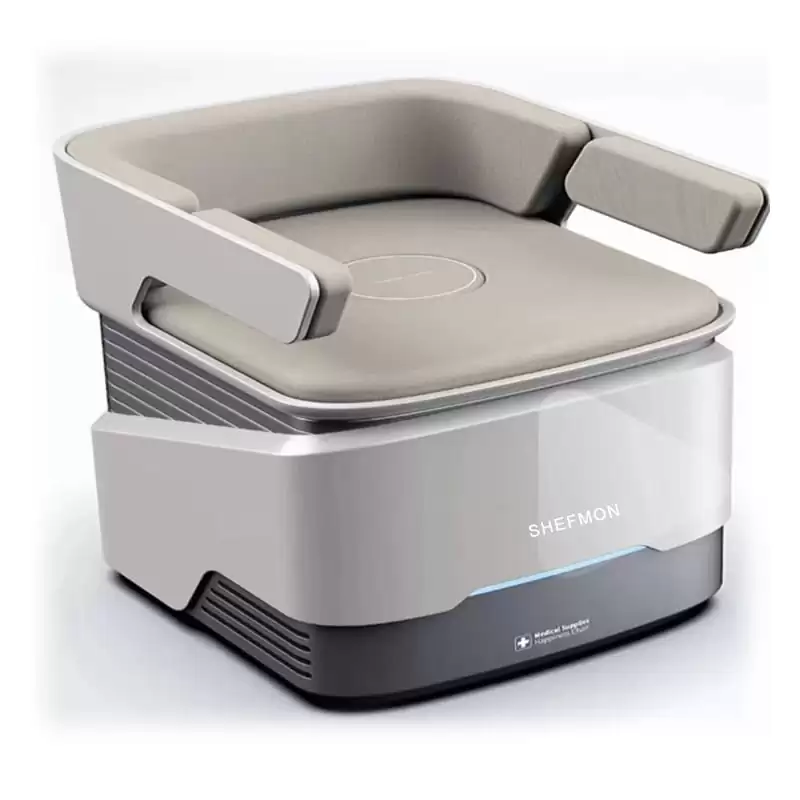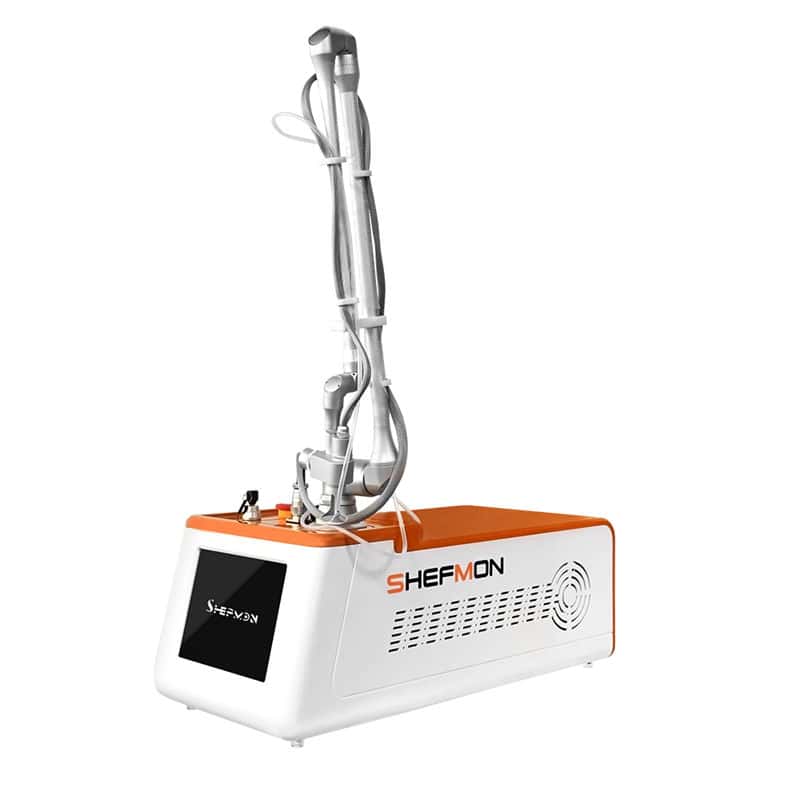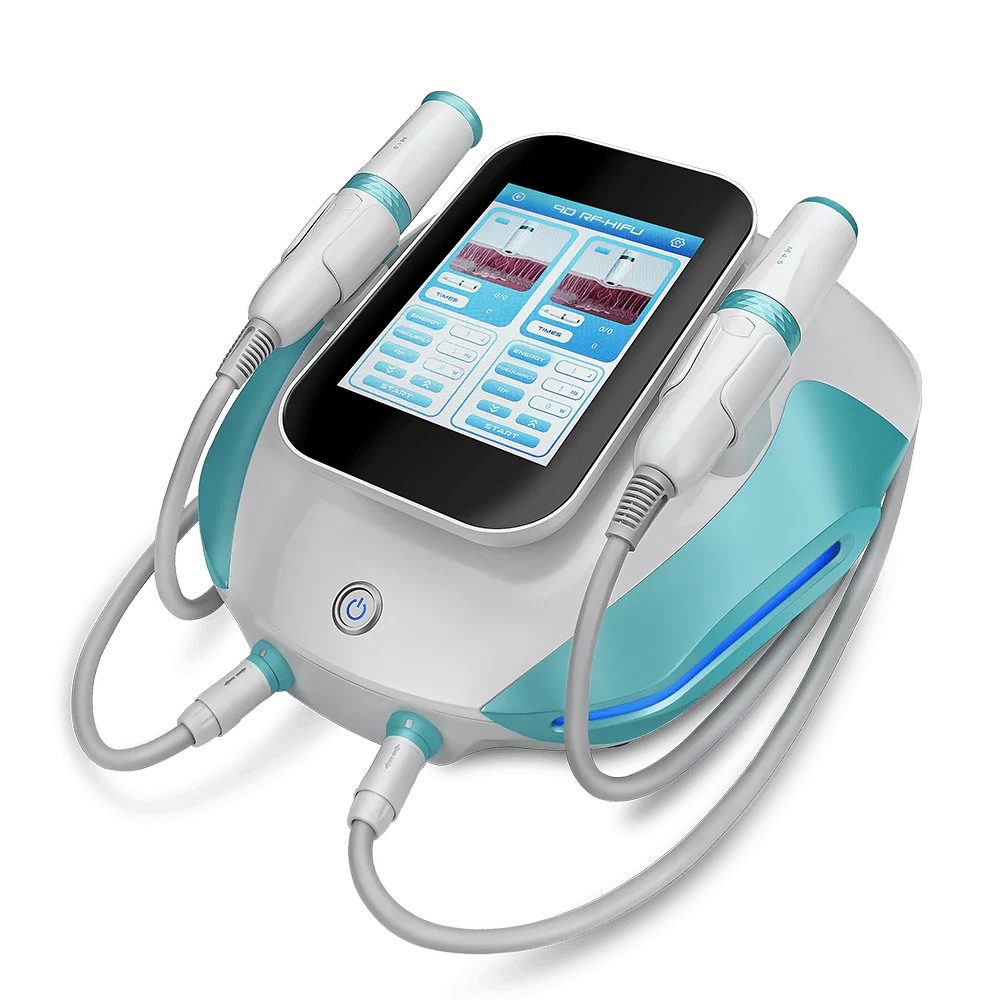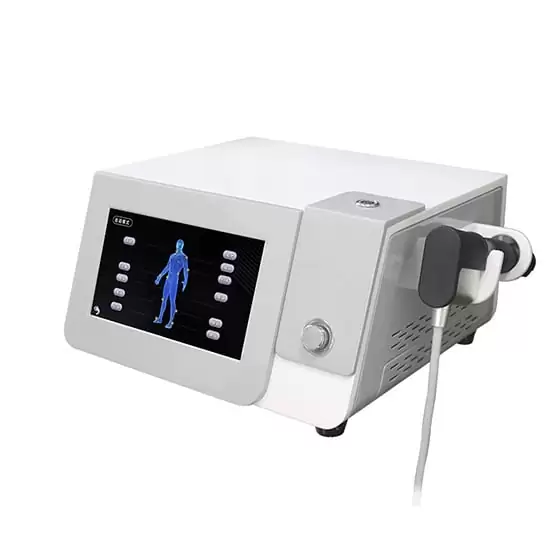Q-Switch / Gütegeschalteter Nd:YAG-Laser und Pikosekundenlaser (manchmal auch Pico-Laser genannt) are both advanced technologies that are commonly used in aesthetic treatments to address a range of skin concerns, including tattoo removal, pigmentation removal and skin rejuvenation. We take a look at the technical differences and applications of the Laser technologies.
Q-SWITCHED ND:YAG LASER
The Q-Switched / Q-Switch Nd:YAG Laser is a type of Laser used in medical and aesthetic procedures. It works by producing short pulses of high-intensity light that are absorbed by the targeted tissue, which can be anything from pigmented lesions to tattoo inks.
HOW IT WORKS:
The Nd:Der YAG-Laserkristall wird durch eine Blitzlampe oder Diode angeregt, wodurch es Licht mit bestimmten Wellenlängen aussendet.
Der Laserstrahl wird dann durch eine Linse fokussiert, dann auf das Zielgewebe gerichtet.
Die Energie des Lasers wird vom Zielgewebe absorbiert, Dadurch erhitzt es sich und zerfällt.
Wenn das Gewebe zerfällt, Es setzt Pigmente oder andere Substanzen frei, die dann durch die natürlichen Prozesse des Körpers entfernt werden.
Der gütegeschaltete Nd:Das Besondere am YAG-Laser ist, dass er sehr kurze Lichtimpulse erzeugt (gemessen in Nanosekunden) mit sehr hoher Spitzenleistung. Dadurch kann es gezielt auf pigmentierte Läsionen oder Tätowierfarbe zielen, ohne das umliegende Gewebe zu beschädigen.
Zusätzlich, Der gütegeschaltete Laser verwendet einen „Q-Switch“-Mechanismus, der ein schnelles Ein- und Ausschalten ermöglicht, producing pulses of light that are very intense and short. This helps to minimize the amount of heat that is transferred to the surrounding tissue, reducing the risk of side effects.
PICOSECOND LASER
Picosecond lasers, sometimes called Pico Lasers, are a type of Laser used in medical and aesthetic procedures that deliver ultra-short pulses of light that are measured in picoseconds (trillionths of a second). The Picosecond Laser works on a similar principle to the Q-Switched laser, but with much shorter pulse durations.
HOW IT WORKS:
The Picosecond Laser uses a high-power Laser diode to generate pulses of light at a specific wavelength (usually 755 nm or 1064 nm).
The Laser beam is focused onto the target area, such as tattoo ink or a pigmented lesion.
The ultra-short pulses of light delivered by the Picosecond Laser create a photoacoustic effect, which means they produce a mechanical pressure wave that breaks apart the pigment in the target tissue into smaller fragments.
The smaller pigment fragments are then expelled by the body’s natural immune system.
Picosecond Laser can deliver shorter pulse durations, which means it can break apart pigments into smaller fragments with less thermal damage to the surrounding tissue.
This can make it more effective for treating certain types of pigments, such as stubborn tattoos, while also reducing the risk of scarring and other side effects.
Picosecond Laser can also be used on a wider range of skin types and colours, as it is less likely to cause hyperpigmentation or hypopigmentation, compared to older Laser technologies.
COMPARING Q-SWITCHED ND:YAG VS PICOSECOND LASERS
Both Q-switched Nd:YAG laser and Picosecond Laser are very similar in their applications. Jedoch, there are some key differences:
PULSE DURATION:
The main difference between the two lasers is the pulse duration. Gütegeschalteter Nd:YAG Laser has a pulse duration of nanoseconds, while Picosecond Laser has a much shorter pulse duration of picoseconds.
This means that Picosecond Lasers can deliver shorter, more powerful bursts of energy, allowing for faster and more precise treatment. Yet Q-Switched Nd:YAG Laser can provide a wider range of pigmentation treatments.
TREATMENT TIME:
Due to the shorter pulse duration, Picosecond Lasers can deliver treatment in a shorter time frame, usually within a few sessions. Gütegeschalteter Nd:YAG Laser may require more treatments to achieve the same results.
